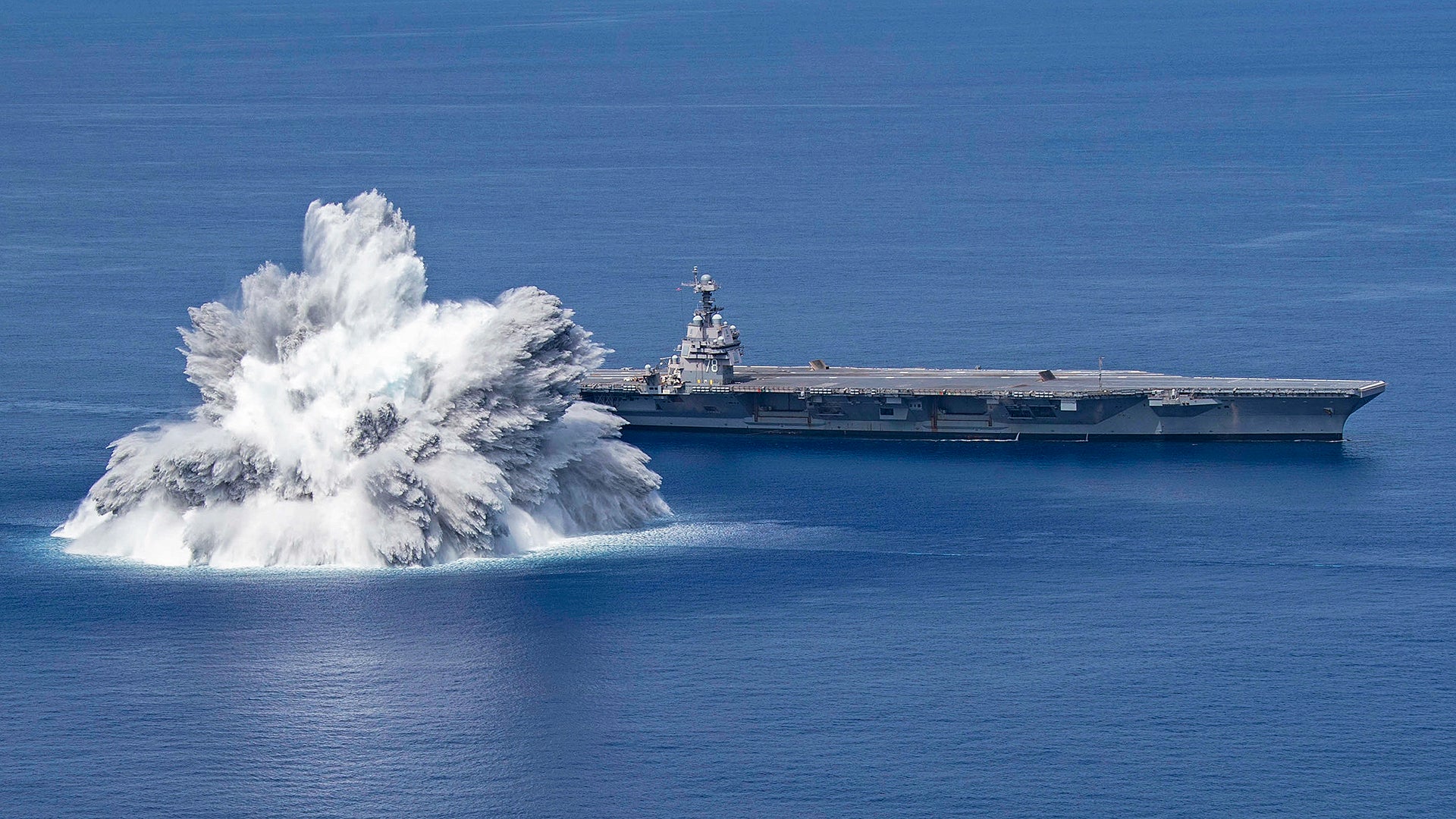The day has finally come—the first in her class USS Gerald R. Ford (CVN-78) has begun shock trials. The first explosive event occurred on the afternoon of June 18th, 2021, off the coast of Florida. The underwater blast registered 3.9 on the Richter Scale, which alerted many of us who watch for these types of events that the trials had begun.
Full Ship Shock Trials (FSSTs) are a massive and potentially invasive test of how all of the ships’ systems, as well as her crew, fare after large concussive blasts occur in close proximity to the ship. This includes everything from the hardiness of onboard computer systems to nuclear reactor elements to sensor systems to crew support elements. Nothing is left unexamined and the entire ship is specifically prepared for the trials with thousands of miles of cabling to support test equipment. The ships’ crew has to be ready for major damage and their ability to respond to that potentiality is part of the testing evolution.
These types of trials are hugely important for a new class of ships, especially one as complex as the Ford class, because nearby explosions could come from careening anti-ship missiles, naval mines, torpedoes, or even other ships nearby that get struck by enemy weaponry. It also gives some insights into how the ship may fare during a successful attack. It’s all about finding any weak spots and remediating them. Any issues can also impact the construction of future Ford carriers, four of which are planned and three of which are deep under assembly at this time.

The bottom line is that the ship needs to be able to take a nearby explosion and continue to fight. Shock trials help ensure that is the case.
Shock trials were potentially going to be delayed significantly for the Ford class, which is far behind schedule and over budget. Pushing the critical test evolution as far back as 2024, and using the second in class USS John F. Kennedy (CVN-79) to do it, was sought by the Navy in 2018. This would have seen USS Gerald R. Ford be put into service without these evaluations completed. Thankfully, not just for Ford, but also for her sister ships now under construction, this didn’t end up being the case. Congressional leadership, namely John McCain, demanded the ship go through the standard testing before being certified for deployment. The last time trials like this were carried out on an American supercarrier was 34 years ago with the USS Theodore Roosevelt (CVN-71).
Hopefully, if the ship and her crew pass these trials, which usually consist of three explosions, without major issues, it will help speed her into an operational state. While problems with a number of her systems persist to some degree, she has seen some improvements as of late. By every indication, the Navy needs Ford available as soon as possible for operations as it pushes its dwindled supercarrier fleet to the max.
With all that being said, we don’t know exactly how the test went as of yet, but we do have these incredible images to pore over:









We will update this story with more information as it comes available.
UPDATE:
We now have video!

Contact the author: Tyler@thedrive.com
